Japanese cuisine has long since enthralled the world with its use of fresh ingredients, umami flavor, and aesthetic presentation. It is no wonder that Japanese cuisine, or washoku as it is called in Japanese, has been added to UNESCO’s ‘intangible heritage’ list.
Sushi may be the most unique of Japanese food but beyond these fresh bites, there are other dishes that are hearty enough to have as ulam and are easy to make at home. From snacks, rice, and noodles to meat-based meals, soups, and desserts, we’ve scoured the best that Japanese cuisine has to offer so you can enjoy these world-class Japanese recipes at home.
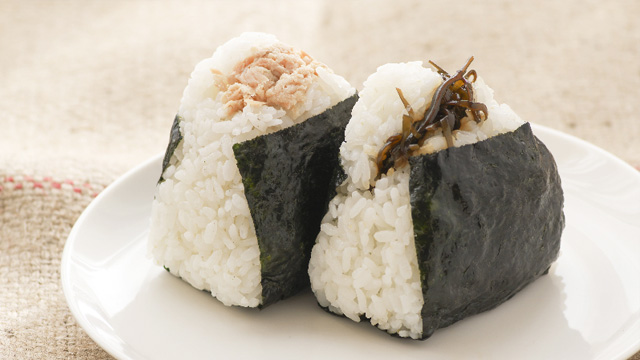
1 Onigiri Recipes
Onigiri are Japanese rice balls that are formed into triangular or cylindrical shapes. They are usually wrapped in nori or dried seaweed and can be flavored lightly or filled with a variety of savory and sometimes pickled ingredients.
These Japanese rice balls were originally made as snacks or traveling food, as they are compact and convenient to carry around. This is also the reason why it usually has pickled fillings; they act as a natural preservative. These days, onigiri are still considered one of the most common snacks to-go, and can be found in convenience stores.
[RecipeImp:{"recipes":["4435","5559","5117","261"]}]

2 Tonkatsu or Katsu Recipes
Tonkatsu is probably one of the most famous Japanese food; after all, who can resist a golden brown, beautifully breaded cut of succulent pork? But if you’re not a meat lover, don’t fret: tonkatsu is just one version of a bigger umbrella of the Japanese cooking style called katsu!
Katsu comes from katsuretsu, which is an old transliteration of the English word “cutlet.” Cooking something katsu-style involves coating it in Panko or breadcrumbs and deep-frying it until golden brown. In the case of tonkatsu, it specifically means “pork cutlet” as "ton" means pork in Japanese. In the same way, chicken (Japanese: tori) is called torikatsu, while minced meat (Japanese: menchi) is called menchi katsu. Other variations include beef (gyukatsu) or seafood like salmon or shrimp katsu.
[RecipeImp:{"recipes":["863","4130","4134","4010"]}]
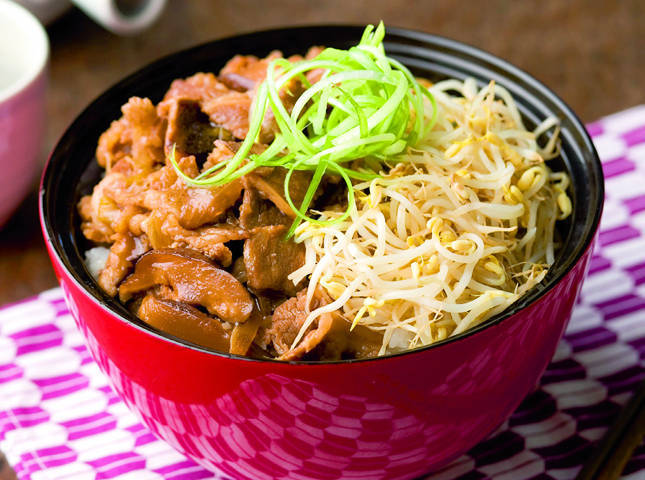
3 Donburi Recipes
Donburi literally means bowl in Japanese, but it is also a category of Japanese cuisine that features rice meals with toppings that are (you guessed it) served in bowls. When it is referring to a specific type of rice topping, “buri” is usually dropped and –don is used as a suffix, as in katsudon, meaning a rice bowl topped with katsu!
Another famous donburi is gyudon, which is topped with beef and onions simmered in a sweet soy-based sauce and served with egg. There is also the chicken and egg topped donburi called oyakodon, which literally translates to “parent and child bowl.”
[RecipeImp:{"recipes":["6791","2497","1014","4251"]}]
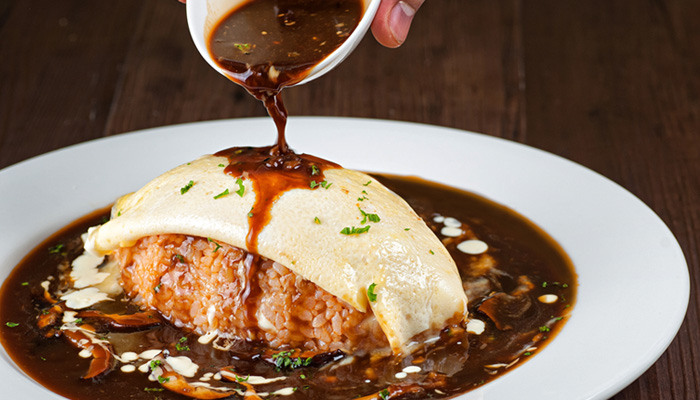
4 Omurice Recipe
Omurice is is a mash-up of an egg omelet and rice. Sounds simple, but what makes this Japanese rice dish such a treat is that the rice, which is usually tossed in flavorful sauce and toppings, is wrapped inside the light, fluffy omelet and topped with either ketchup or more sauce. It’s not only a feast for the mouth, but also for the eyes as the golden omelet provides a rich contrast against the sauces on top or around it.
[RecipeImp:{"recipes":["5750"]}]
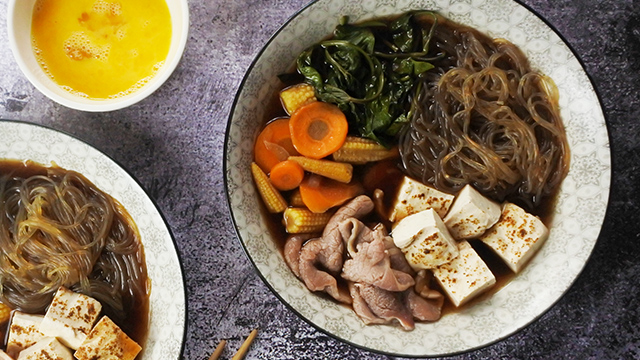
5 Sukiyaki Recipes
Sukiyaki is one of the best Japanese dishes to have when you are craving hot soup. It is a lot like shabu-shabu, but with some key differences: whereas shabu-shabu usually has a clear broth and uses thinly-sliced meat that is cooked by dipping in the boiling broth, sukiyaki beef cuts are a little bit thicker and are grilled or cooked in the pot before the broth is added. It also has a sweeter, soy-based broth.
This Japanese hot pot dish is usually best eaten with a group since it is served with a variety of ingredients like vermicelli noodles, tofu, leafy greens like napa cabbage, and other mushrooms and vegetables.
[RecipeImp:{"recipes":["5518","5547","49"]}]

6 Karaage and Tempura Recipes
While karaage usually refers to fried chicken thighs, it can also be substituted with fish and vegetables. Karaage traditionally involved only coating chicken in flour, but nowadays, the style has evolved to include lightly marinating the meat in soy sauce, ginger, and garlic before tossing it in flour and frying until crispy. It is usually served with Japanese mayonnaise and a slice of lemon.
On the other hand, tempura are also most associated with shrimp or prawn, but you could also make tempura with other seafood like fish or squid, and vegetables like sweet potatoes, eggplants, and more. Whereas karaage is made crunchy by dredging the chicken in flour or starch, tempura gets its signature bite from a light and crispy batter. It is usually served with tentsuyu, or tempura dipping sauce, to which grated daikon radish can also be added.
[RecipeImp:{"recipes":["2539","5861","2697","4038"]}]

7 Japanese Curry Recipes
Japanese curry, or as the Japanese pronounce it, karee (ka-REH) is one of the heartiest meals you can have. It is a versatile dish that can feature any kind of meat or seafood, along with potatoes, carrots, and onions. Japanese curry is usually brown in color, as the curry roux is made by browning the fat and flour before adding the curry spices that gives it its unique flavor.
Japanese curry is so versatile that while it can be eaten with just plain rice, it can also be paired with other Japanese recipes to create an even more exquisite meal: add it as a sauce to katsu and you have katsu curry, add it to udon broth to make curry udon, or even mix it with omurice to make a curry omurice!
[RecipeImp:{"recipes":["2345","6671","4134"]}]
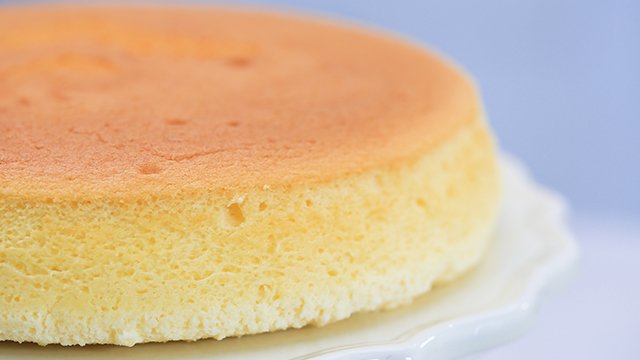
8 Soufflé Cheesecake or Japanese Cheesecake
There are three main types of cheesecakes you could get in Japan: baked, which is the “classic” cheesecake we all know; rare, which is also a no-bake cheesecake; and soufflé, which is known to the rest of the world as Japanese cheesecake or even cotton cheesecake.
This light and airy confection is made by whipping up egg whites to make a fluffy meringue and folding it into the cream cheese batter. It is also the best example of the saying, “good things come to those who wait,” as it takes more than an hour to gently bake in the oven in a water bath, but the resulting texture and flavor is just so worth it!
[RecipeImp:{"recipes":["2188"]}]
Japanese food may be a vast area of unique combinations of textures, flavors, and even ingredients but one thing stays true: we love Japanese food in all its forms. Here are more recipes and ideas on what to cook if you're ever in the mood to go Japanese.
[ArticleReco:{"articles":["23794","23240","19462","25520"]}]
***
Did you find this article useful? Save THIS PIN to your board and check it later at any time!
